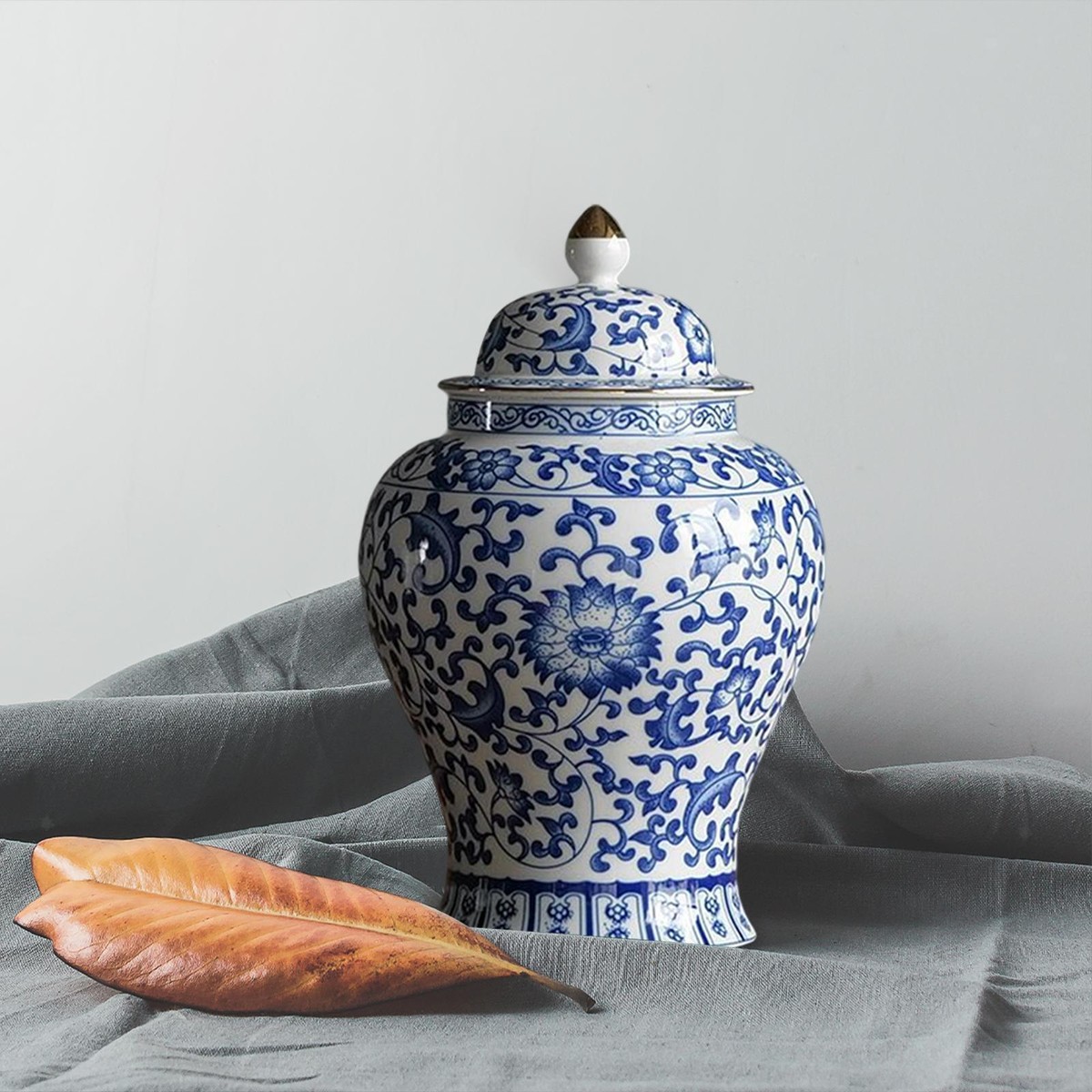No data
No data
What Is a Chinese Ceramic Ginger Jar?
Introduction
If you’ve ever walked into an antique shop, a high-end home décor store, or even a traditional Chinese household, you’ve probably seen a Chinese ceramic ginger jar. With its rounded body, domed lid, and beautiful hand-painted designs, the ginger jar is one of the most recognizable symbols of Chinese ceramic art. But what exactly is it, and why has it remained popular for centuries?
Origin and History
The ginger jar dates back to the Ming Dynasty (1368–1644). Originally, these jars were designed as practical containers used to store valuable goods such as ginger, spices, salt, oils, and even tea — hence the name “ginger jar.”
Over time, their purpose shifted from simple storage to decorative art objects, especially as they were exported to Europe during the 17th and 18th centuries. Western collectors prized them for their beauty, and ginger jars quickly became iconic pieces in both Asian and Western interiors.
Key Features of a Chinese Ceramic Ginger Jar
Shape: Rounded body, wide shoulders, and a domed lid with a small knob.
Material: High-fired ceramic or porcelain, making them durable and smooth.
Designs: Traditional motifs often include:
Blue-and-white landscapes and floral patterns
Dragons, phoenixes, or Chinese calligraphy
Symbolic elements such as lotus flowers (purity) or peonies (prosperity)
Size: They vary — from small table-top jars to large floor-standing vessels.
Symbolism in Chinese Culture
Beyond storage, ginger jars carry symbolic meaning:
Prosperity and abundance: Since they were once used to store precious spices.
Protection: Lidded jars symbolized safeguarding valuable contents.
Harmony: Floral and nature motifs often represented peace and good fortune.
Because of this, ginger jars are often gifted at weddings, housewarmings, and festivals as symbols of good luck.
Modern Uses of Ginger Jars
Today, Chinese ceramic ginger jars are mostly decorative. They are popular in:
Home décor: Placed on mantels, side tables, or as statement pieces.
Interior design: Used in pairs for symmetry in living rooms or entryways.
Floral arrangements: Sometimes used as vases when the lid is removed.
Collectibles: Antique ginger jars remain highly sought after by collectors worldwide.
Ginger Jars vs. Other Chinese Ceramics
Vases: Taller and narrower, often used specifically for flowers.
Urns: Larger, more ceremonial in purpose.
Ginger jars: Distinct because of their rounded body + domed lid combination.
FAQ
Q1: Why are they called ginger jars?
Because they were originally used to store ginger and other spices in China.
Q2: Are ginger jars always blue and white?
No, while blue-and-white is most famous, they also come in multicolor, celadon green, or even solid glazes.
Q3: Are antique ginger jars valuable?
Yes, authentic Ming or Qing dynasty jars can fetch high prices at auctions.
Q4: Can I use a ginger jar as a vase?
Yes, many people remove the lid and use them for flower arrangements.
Q5: Are modern ginger jars still made in China?
Yes, China continues to produce both traditional and contemporary styles for global markets.
Chinese ceramic ginger jar,blue and white ginger jar,antique Chinese ginger jar,porcelain ginger jar decor,traditional Chinese ginger jar,large ceramic ginger jar,ginger jar home décor,collectible Chinese porcelain jar,hand-painted ginger jar,ginger jar vase with lid
Latest Blog








